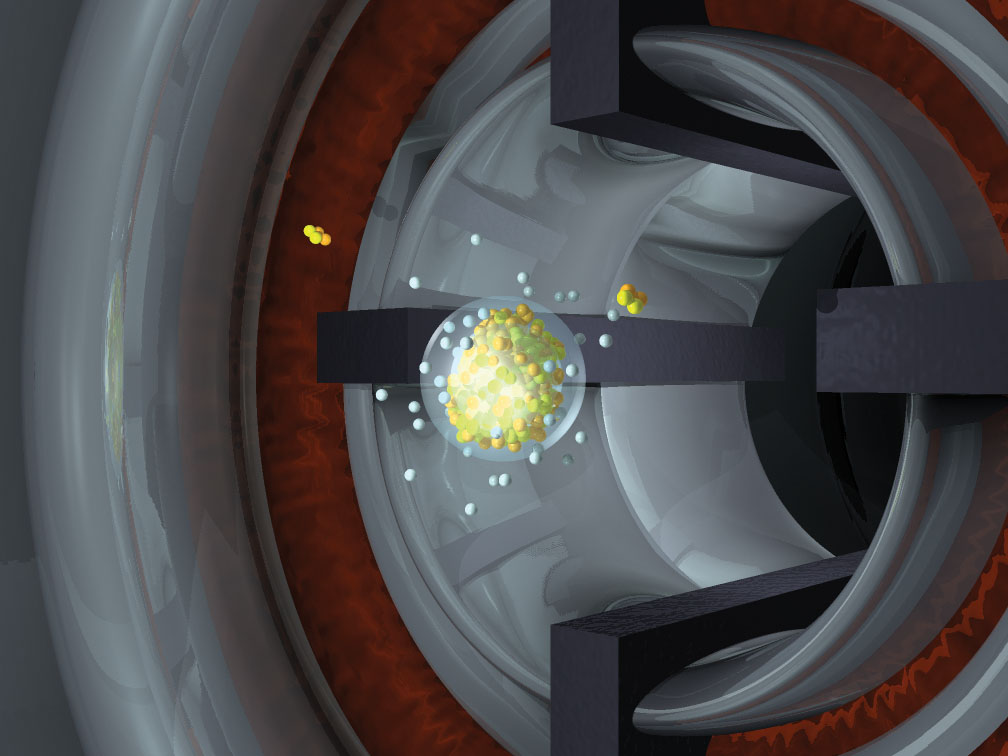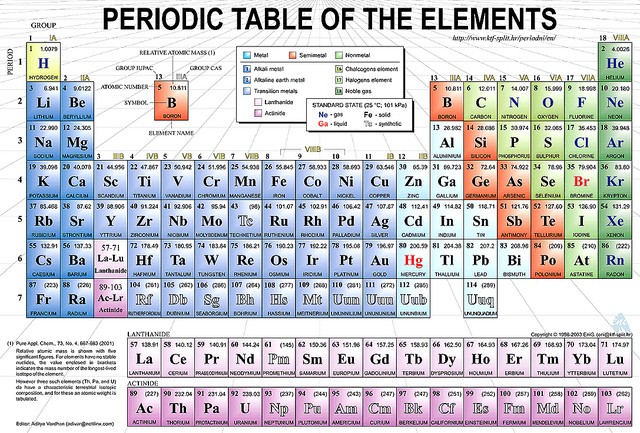
1 are absolutely required in the human diet. Of the approximately 115 elements known, only the 19 highlighted in purple in Figure 1.9. When these atomic nuclei collided, some fused together to create short-lived atoms with 115 protons. Learning Objective To understand the importance of elements to nutrition. To make ununpentium in the new study, a group of researchers shot a super-fast beam of calcium (which has 20 protons) at a thin film of americium, the element with 95 protons. Their measurements have now been confirmed in experiments at the GSI Helmholtz Center for Heavy Ion Research in Germany. In experiments in Dubna, Russia about 10 years ago, researchers reported that they created atoms with 115 protons. Scientists hope that by creating heavier and heavier elements, they will find a theoretical "island of stability," an undiscovered region in the periodic table where stable super-heavy elements with as yet unimagined practical uses might exist. The heaviest element commonly found in nature is uranium, which has 92 protons, but scientists can load even more protons into an atomic nucleus and make heavier elements through nuclear fusion reactions. In all the times Ive taken it the only element Ive never guessed is Roentgenium. Until they do, it has a temporary name: “ Ununpentium.” That may be harder to memorize than “element 115,” but it is a scientific term made from Latin and Greek that basically means 1-1-5.The atomic number is the number of protons an element contains.

The Swedish scientists have not given element 115 a name yet. Why create elements that disappear in a flash? Scientists hope one day to make one that doesn’t, thus creating a brand new lasting element, Popular Science magazine reports.īut for this particular element, the researchers assert on their website, “any practical implications are seemingly far fetched.” That means more than two dozen of all the known elements were artificially created. Twitter: elements with larger proton numbers have been created artificially in nuclear reactions,” says the Helmholtz Center for Heavy Ion Research in Germany, where the Swedish scientists made element 115.Muscovium was discovered by together by the Joint. However, trace amounts of plutonium and neptunium have been found naturally as well. Moscovium is the Moscow region of Russia, which is home to much of Russias superheavy element research. The highest-numbered element on the periodic chart that exists in nature is uranium, which has 92 protons at its core. The superheavy Element 115 was created in a Dubna, Russia, cyclotron by slamming a rare isotope Element 115 Ununpentium decay chain: to Element 113 Ununtrium. Gold has just 79.īut you won’t find a chunk of element 115 lying around anywhere. And with 115 protons, this new element earns the moniker “super-heavy element.”įor the sake of comparison, an atom of lead only has 82 protons. Chapter 4 Resource Atoms Elements And The Periodic Table Meet 115 The Newest Element On. The more protons an atom has, the higher its number on the periodic table. Infer the position of the elements on the periodic table. This working group will determine whether the existing evidence is enough to justify adding the element to the table, or if more proof is required. The discovery still has to be approved by a committee composed of members of the International Union of Pure and Applied Chemistry and the International Union of Pure and Applied Physics. Still, this doesn’t mean that you’ll see element 115 on the next periodic table poster that gets published. A group of Russian scientists put together the same type of atom in 2004.īut the new experiment corroborated their work and confirmed 115’s existence. The Swedes were the second group of scientists to create the element. That would give it the atomic number of 115 on the periodic table, the list of all elements known to humanity. That flash, or “fingerprint,” confirmed the existence of an element with 115 protons at its center. The newly formed element vanished quickly in a flash of radiation that scientists could measure.


Researchers from Lund University in Sweden created it by slamming atoms of one element, calcium, into atoms of another called americium. As though it wasn’t hard enough to memorize the names and atomic weights of 117 elements in the periodic table, scientists have now confirmed a new one.


 0 kommentar(er)
0 kommentar(er)
